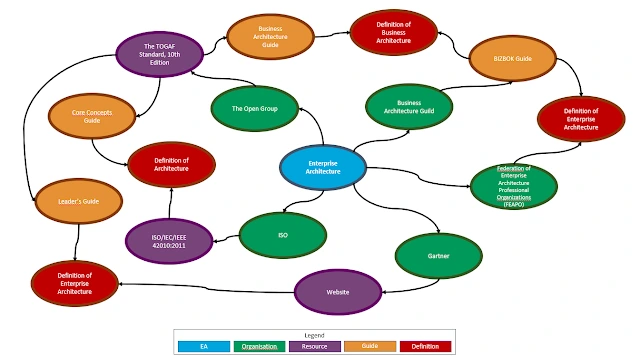Ask someone to describe an apple. In nine times out of ten, the person will come up with something the likes of it being a round piece of fruit with a stalk (and a small leaf) that contains vitamins. Some will also add a colour to the description.
A round piece of fruit with a stalk (and a small leaf) that is sometimes red in color and contains vitamins.
This description could just as easily refer to a cherry, or a grape. Granted, cherries and grapes are also fruit, but they are not apples. This is typically a case of comparing apples and oranges.
Definitions actually really matter…
Diverse definitions
How remarkable, then, to find that the definition of Enteprise Architecture has multiple manifestations. Especially Enterprise Architecture, a field that focuses on providing clarity in an approach to be adopted and should provide clarity with definitions.
Even TOGAF, a framework that has been developing at full speed in the world of architecture for decades, manages to include multiple definitions of Enteprise Architecture in its latest edition, the TOGAF Standard, 10th Edition.
For example, the Core Concepts section 3.2 (part of the TOGAF Standard, 10th Edition, Fundamental Content) defines architecture as:
The fundamental concepts or properties of a system in its environment embodied in its elements, relationships, and in the principles of its design and evolution.
This definition is based on ISO/IEC/IEEE 42010:2011 standard. Last year, in 2022, a revised version has been published, withdrawing the 2011 version. It’s sad to see that the TOGAF Standard has not been updated with the latest version of the ISO standard, even though it has been published in November 2022.
The Leader’s Guide, part of the same TOGAF Standard, interprets Enterprise Architecture in section 2.2 as:
The process of translating business vision and strategy into effective enterprise change by creating, communicating, and improving the key principles and models that describe the enterprise’s future state and enable its evolution.
This definition comes from Gartner. Please note that Gartner drew up this definition in 2008, making it 15 years old to this day! Given the speed with what the profession evolves (and has evolved) over the years, it’s safe to say that a definition drawn up in 2008 might be a little superseded.
So, one standard, based on multiple and (somewhat) outdated definitions. How is that for making life simpler…
Constructing the confusion
Looking at the definition of Business Architecture, TOGAF refers to the Business Architecture Guide, also part of the TOGAF Standard, 10th Edition. The definition used in the Business Architecture Guide part is consistent with that of the Business Architecture Guild. According to their BIZBOK Guide:
Business architecture represents holistic, multidimensional business views of: capabilities, end-to-end value delivery, information, and organisational structure; and the relationships among these business views and strategies, products, policies, initiatives and stakeholders.
BIZBOK Guide v.11, page 2
So with this, TOGAF seems to align well with the BIZBOK Guide. However, the definition of Enteprise Architecture, as described in the BIZBOK Guide, does not come from the TOGAF Standard, but from the Federation of Enterprise Architecture Professional Organisations (FEAPO), which yields a third definition of Enteprise Architecture:
Enterprise Architecture represents the holistic planning, analysis, design, and implementation for the development and execution of strategy by applying principles and practices to guide organizations through the integration and interoperation of all other architecture domains.
FEAPO definition of Enterprise Architecture
The above variations are still completely separate and different from the definitions that parties such as ArchiMate – part of the same Open Group that has published the TOGAF Standard, 10th Edition – give to Enteprise Architecture. And of course there is overlap in the descriptions, but they are not equal.

Striving for simplicity
All these different definitions together do not make the field of architecture any clearer. It would therefore be good if all these parties would align a bit more. Especially within one and the same standard, which is what The Open Group strives for. Surely it cannot be the case that there are multiple definitions of the same subject within one standard?
Now, the field of architecture has existed for over thirty years. And in those thirty years, the profession has grown up more and more. It has now grown into a fully-fledged framework which is widely used and applied worldwide. But some essentials – such as having a single and unambiguous definition – seem to have been lost sight of.
Closing comments
It would be good to rectify this in the short term, and prevent any further decline of the profession. I am convinced that reducing the number of definitions of Enterprise Architecture (in this case, adopting a single definition) and implementing unity of language can help the field grow further in maturity.
Do you (dis)agree? Please share your comments.







Leave a Reply